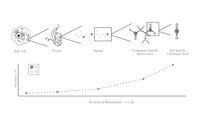
Photo from wikipedia
Toward the well‐explored lithium−sulfur (Li−S) catalytic chemistry, the slow adsorption‐migration‐conversion kinetics of lithium polysulfides on catalytic materials and Li2S deposition‐induced passivation of active sites limit the rapid and complete conversion… Click to show full abstract
Toward the well‐explored lithium−sulfur (Li−S) catalytic chemistry, the slow adsorption‐migration‐conversion kinetics of lithium polysulfides on catalytic materials and Li2S deposition‐induced passivation of active sites limit the rapid and complete conversion of sulfur. Conceptively, molecular architectures can provide atom‐precise models to understand the underlying active sites responsible for selective adsorption and conversion of LiPSs and Li2S2/Li2S species. Here, an octanuclear Zn(II) (Zn8) cluster is presented, which features a metallacalix[8]arene with double cavities up and down the Zn8 ring. The central Zn8 ring and the specific double cavities with organic ligands of different electronegativity and bonding environments render active sites with variable steric hindrance and interaction toward the sulfur‐borne species. An intramolecular tandem transformation mechanism is realized exclusively by Zn8 cluster, which promotes the self‐cleaning of active sites and continuous electrochemical reaction. Notably, the external azo groups and internal Zn/O sites of Zn8 cluster in sequence stimulate the adsorption and conversion of long chain Li2Sx (x ≥ 4) and short chain Li2S/Li2S2, contributing to remarkable rate performance and cycling stability. This work pioneers the application of metallacalix[n]arene clusters with atom‐precise structure in Li−S batteries, and the proposed mechanism advances the molecule‐level understanding of Li−S catalytic chemistry.
Journal Title: Advanced Materials
Year Published: 2022
Link to full text (if available)
Share on Social Media: Sign Up to like & get
recommendations!